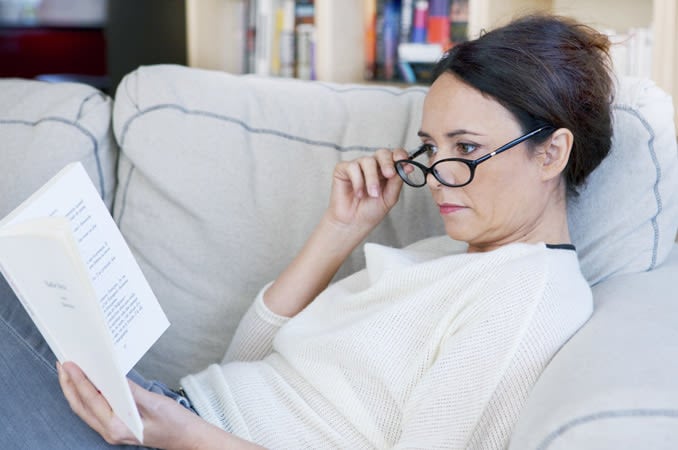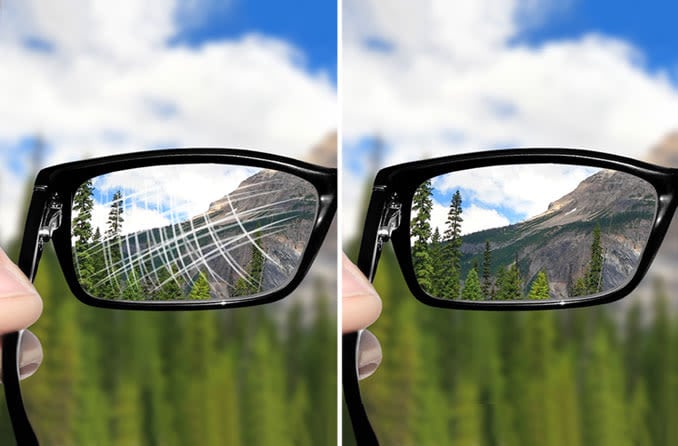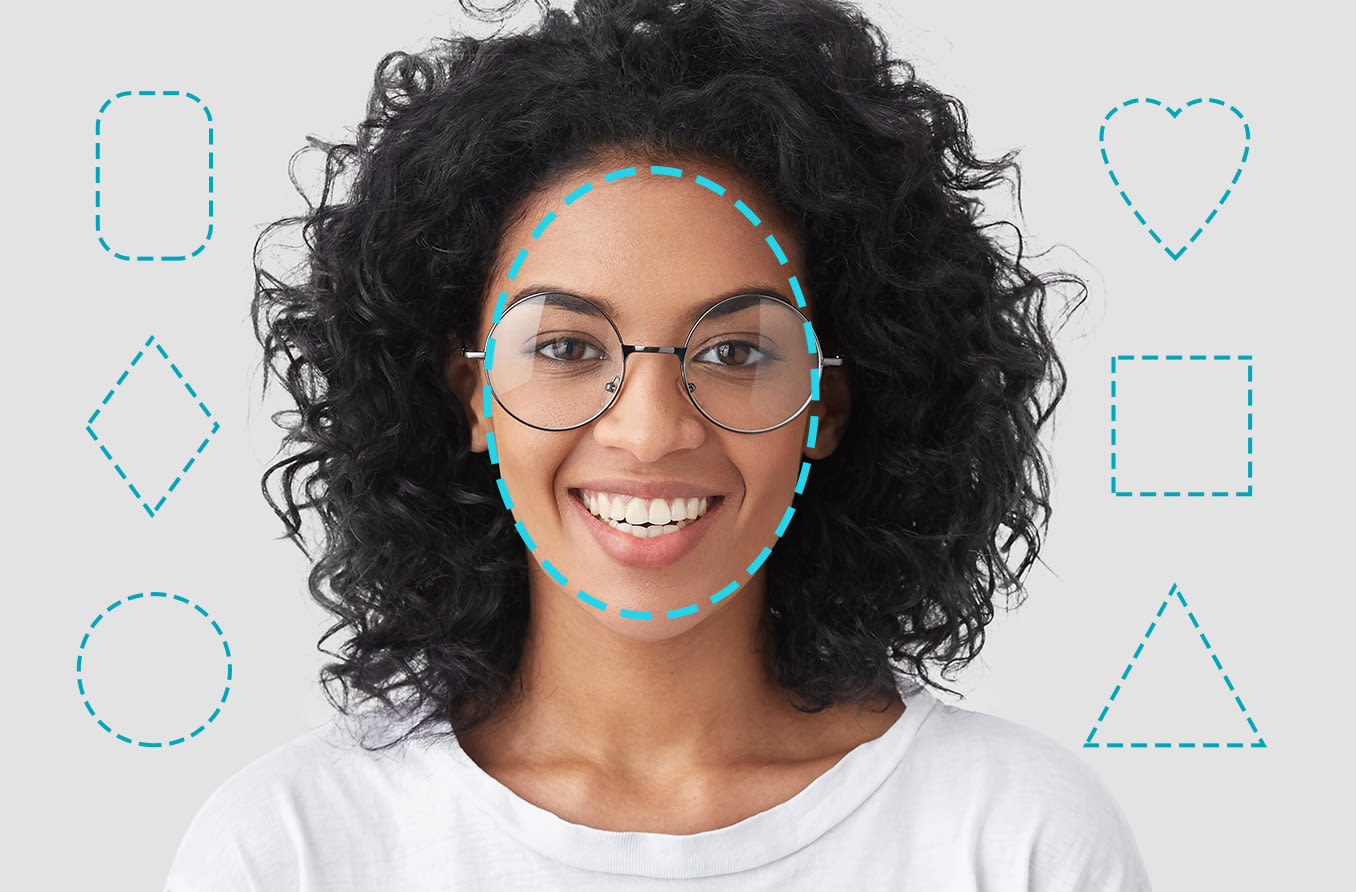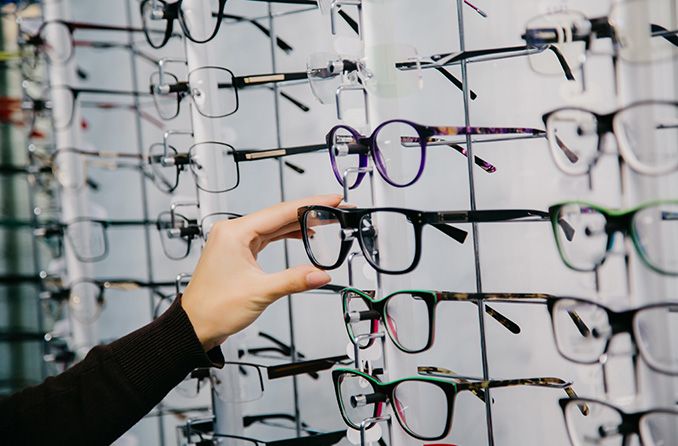What are bifocal sunglasses?
Bifocals are glasses with two prescriptions in one lens. The top portion of the lens has a prescription for distance vision. The bottom has a prescription for near vision. Bifocal sunglasses have the same features with sunglass lenses and (in many cases) ultraviolet (UV) protection.
Bifocals are prescribed for people with a refractive error called presbyopia (age-related farsightedness). Presbyopia makes it difficult to see things from a reading distance. It occurs naturally with age, and many begin to experience it around the age of 40.
In any bifocal lens, the lens’s powers are separated by a visible line. This includes sunglasses with bifocal lenses. This visible line can be distracting for some, but there are numerous benefits of bifocal sunglasses that can make the small line worth it. This may include UV protection, convenience and other factors.
Here is an overview of bifocal sunglasses and what makes them different from regular shades.
Benefits of bifocal sunglasses
If you love spending time outside, you probably don’t want to carry around multiple pairs of glasses just to be able to read or do other near-vision tasks. It can be inconvenient switching between sunglasses and reading glasses, especially when they can easily get misplaced or broken.
With bifocal sunglasses (also called bifocal reading sunglasses or bifocal sun readers), you can get the best of both worlds. They let you shield your eyes from the sun’s rays and allow you to focus on things up close.
Bifocal sunglasses can be a great option for people with presbyopia for many reasons, including:
- Improved vision – Sunglasses with bifocal lenses provide clear vision for up-close tasks, setting them apart from single power or non-prescription sunglasses.
- Sun protection – Many bifocal sunglasses come with lenses that help protect your eyes against the sun’s harmful UVA/UVB rays.
- Convenience – Bifocal sunglasses have two powers in one lens, providing convenience for on-the-go lifestyles.
- Time-saving – With bifocal sunglasses, you can see both near and far objects clearly.
- Cost effectiveness – One pair of bifocal sunglasses can be all you need to enjoy outdoor activities. This option may be less expensive than contact lenses.
These advantages can make a big difference in many outdoor activities, from reading at the beach to reviewing a restaurant menu on a sunny patio.
Disadvantages of bifocal sunglasses
While bifocal sunglasses offer many benefits, there are a few downsides. Some disadvantages of bifocal reading sunglasses include:
- Sudden jump in vision – Because two powers (one for reading and one for distance) are set together in the same lens, you may experience a disruption in your vision. A “jump” can occur as your eye adjusts from one segment of the lens to the other. Some people may experience eye strain due to vision jumps.
- No intermediate vision – You may notice a “lost area” between the two powers. If you want to see objects in between the near and the far, ask your eye doctor about sunglasses with progressive lenses.
- Small reading area – The magnified area at the bottom of the lens may be too small a field of vision for some people.
Types of bifocal sunglasses
The type of bifocal sunglasses you need depends on your personal preferences and vision needs and can include:
Prescription vs. non-prescription bifocals
You can find both prescription and non-prescription bifocal lenses. Prescription bifocals have a distant vision correction in the top part of the lens. You need a prescription to have these two corrective powers in your glasses.
Non-prescription bifocals don’t have a corrective power in the top of the lens. The only magnification is in the bottom of the lens.
A prescription can provide more options for your bifocal sunglasses. You can order many styles of prescription sunglasses with a bifocal prescription. You will need to provide your prescription to your optician or enter it during the checkout process of an online order.
Non-prescription bifocal sunglasses are available, too. These are sometimes called “bifocal style readers.” However, the options may be more limited with these styles. Some retailers don’t carry non-prescription bifocals, let alone non-prescription bifocal sunglasses.
Specialty retailers, such as readers.com, may be your best choice for this type of lens. You can also consult your optician for recommendations.
No matter which type of lens you choose, remember that it’s important to get your eyes and vision examined regularly by your eye doctor.
Polarized bifocal sunglasses
Polarized sunglasses are specially designed to filter light and reduce glare from reflective surfaces, such as water. Polarization technology helps enhance your ability to see details, providing a clearer view. This can be beneficial for activities, such as:
- Fishing
- Golfing
- Boating or water sports
- Spending time at the beach
Bifocal sunglasses with polarized lenses may be a great investment for outdoor enthusiasts who need two powers of vision correction.
How to choose the right bifocal sunglasses
There are many factors to consider when choosing the right bifocal sunglasses. Both lens and frame customizations can help you tailor sunglasses to individual needs.
Lens coatings
There are several lens coatings to consider for your bifocal sunglasses. Some of the most recommended options include:
- UV-protection – This may not be guaranteed with “dark lenses.” Ensure your bifocal sunglasses have 100% UVA/UVB protection.
- Anti-reflective coating – This can help prevent distracting reflections in your lenses and reduce glare.
- Anti-scratch coating – This reduces the risk of your lenses getting scratched, which can improve their durability and make them last longer.
Lens materials
High-quality lens materials are important to consider for sunglasses with bifocal lenses, too. Explore materials, such as:
- Polycarbonate – This lightweight, durable plastic can be a great choice for sunglass lenses. It’s impact-resistant and performs well in outdoor activities.
- Trivex – This material is even lighter than polycarbonate. It’s also impact-resistant and may cause less distortion than polycarbonate lenses.
Frame styles
For the fashion-minded, bifocals come in many styles, and choosing eyewear can be fun. You can customize your look based on:
- Frame color, from solid to patterned
- Frame shape, from aviator to cat-eye
- Frame style, from rimless to wraparound
- Frame material, from metal to plastic
SEE RELATED: The best sunglasses for your face shape and skin tone
Caring for your bifocal sunglasses
Proper storage and care can help extend the life of your eyewear. Here are a few tips to keep in mind:
Maintenance tips
The best way to prevent damage is to handle your glasses appropriately. Some best practices for eyewear maintenance include:
- Proper storage – Keep your bifocal sunglasses in a hard case when you’re not using them.
- Proper handling – Store your bifocal sunglasses in a dry and cool environment. Don’t leave them in a hot car, as this can damage lens coatings.
- Proper cleaning techniques – Keep your bifocal sunglasses clean with gentle, non-abrasive soap and water. Dry and wipe them clean with a lint-free towel. It’s best to avoid using towels, clothing or paper towels, as they can be too rough and may scuff the lenses.
Common issues and solutions
You may have trouble adjusting to a new prescription, and bifocals are no exception. Multiple corrective powers in one lens can sometimes cause distortion and take a while to get used to. Speak with your eye doctor if you continue to have trouble after a few weeks of wear.
Let your eye care professional know about any other problems with your lenses or the fit of your frames.
Frequently asked questions
Choosing the right bifocal sunglasses for your needs may feel overwhelming. To help put your mind at ease, we’ve compiled a list of frequently asked questions.
Can you get bifocal sunglasses without a prescription?
Yes, you can get bifocal sunglasses with or without a prescription. The non-prescription option is often called “bifocal style reading glasses” with sunglass lenses.
If you need both near and distant vision correction, you will need a prescription. If you don’t need a prescription for distance, you may consider reader sunglasses instead of non-prescription bifocal sunglasses.
Talk to your doctor about your concerns to find the best glasses for you.
Are bifocal sunglasses suitable for all activities?
Bifocals can be quite versatile. When you’re outdoors enjoying the fresh air and sunlight, you may need to look closely at things during some activities. For instance, you could be:
- Sitting with friends at an outdoor café and wanting to read the menu.
- Riding in the car and needing to glance at a map or the GPS on your smartphone.
- Playing golf and wanting to check the scorecard.
- Reading a book by the pool or on the beach and looking up to check on the kids.
With bifocal reading sunglasses, it’s a win-win situation. No matter the outdoor activity, you can see far away and up close with little effort.






